
Ahead of the latest Destiny 2 expansion, Lightfall, SteelSeries announced a suite of limited edition Lightfall-themed gaming gear. Although Lightfall fell flat for many longtime fans, SteelSeries’ gear doesn’t (well, except for the mousepad, but it’s good that’s flat).
SteelSeries launched a Destiny 2: Lightfall Edition Arctis 7+ headset, Aerox 5 mouse and a QCK Prism XL mousepad. There are also Lightfall-themed KontrolFreek “performance thumbsticks” for console players, though I play on PC and didn’t test those out. I did, however, take the Arctis 7+, Aerox 5 and QCK Prism for a test drive in Lightfall and was pleasantly surprised by how much I liked all three.
Oh, and before I get into it, the Lightfall-themed SteelSeries gear comes with codes for an in-game emblem and emote; nice little touches, though not worth a purchase on their own.
Another thing worth keeping in mind is that aside from the Lightfall colourways, each of the products below is functionally the same as the non-Lightfall versions, but costs slightly more. I’ve included pricing and links to the non-Lightfall variants below for those who like the devices but don’t care for the Destiny special editions.
QCK Prism lights up my desk

Let’s start things off with the QCK Prism XL mousepad. I have the least to say about the mousepad because, well, it’s a mousepad. It’s tough to get wrong. That said, I did really appreciate the design of the QCK Prism — the Lightfall theme and colours are nice as a Destiny 2 fan, the light-up RGB edge is cool — especially once I figured out how to sync it with the mouse colours using the SteelSeries software — and it feels great under my mouse when gaming.
To be fair, the Prism mousepad doesn’t feel significantly different from my old mousepad, a gargantuan Stitch Cloth mousepad from Glorious. My only real concern with the Prism was that it wasn’t as big as the Stitch Cloth mousepad (which, admittedly, was far too big for my desk). However, the size difference didn’t really hamper my mouse use in typical day-to-day use. When gaming, I occasionally grazed the top edge of the Prism mousepad, but usually, that just meant I needed to adjust my position and seldom got in the way of gameplay.
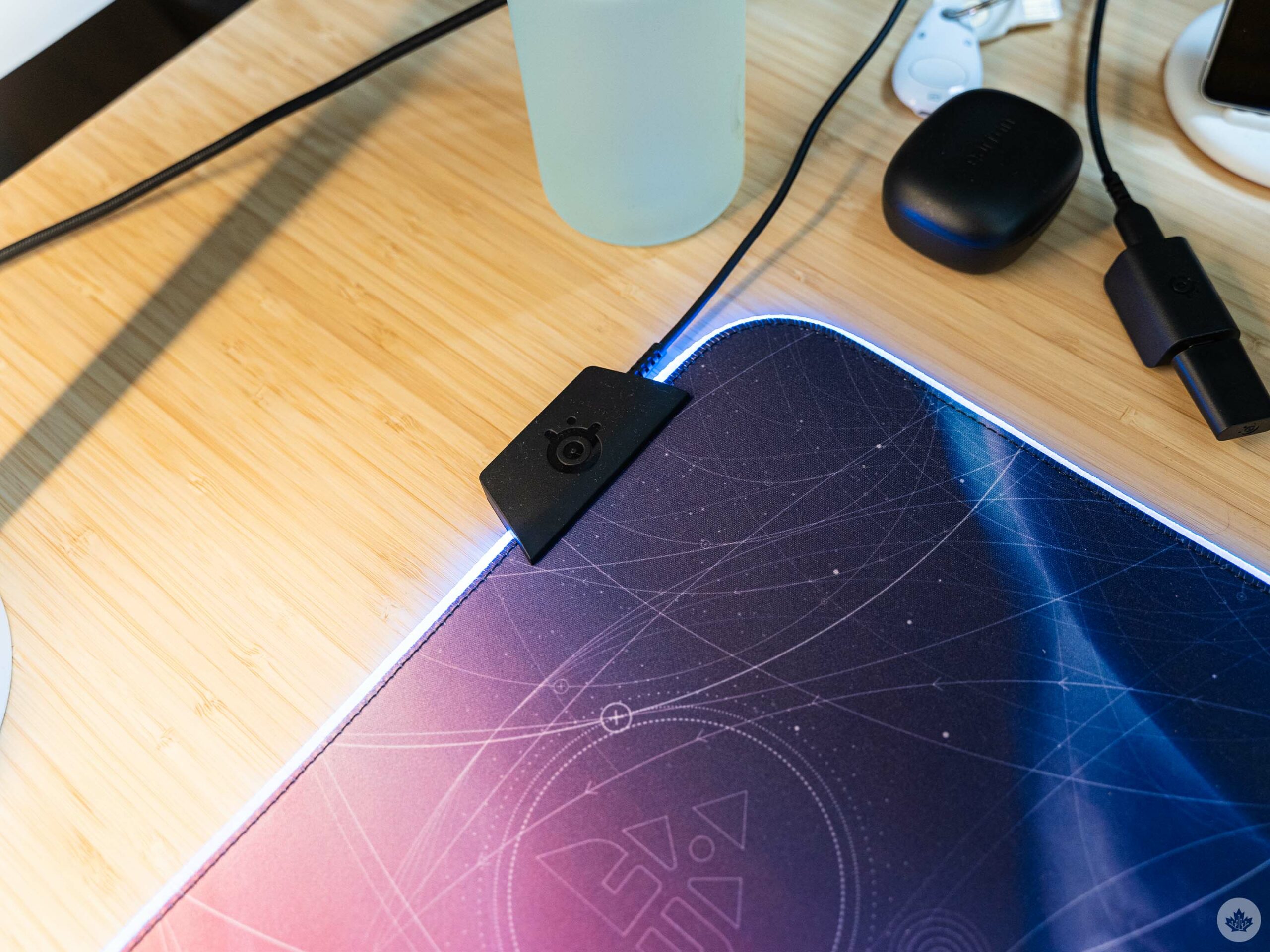
Ultimately, I prefer the smaller mousepad size since the too-big Sitch Cloth mousepad hung over the back of my desk. However, the smaller size might not work for everyone. The QCK Prism XL clocks in at 900 x 300 x 4mm, and unfortunately, it seems that’s the only size option for the Lightfall Edition. Those not interested in getting the Lightfall-themed mousepad can enjoy larger sizes up to 1600 x 800 x 4mm.
The QCK Prism XL Destiny 2: Lightfall Edition costs $89.99 in Canada, while the regular version starts at $79.99 for the same size.
The Aerox 5 gives my Razer mouse a run for its money
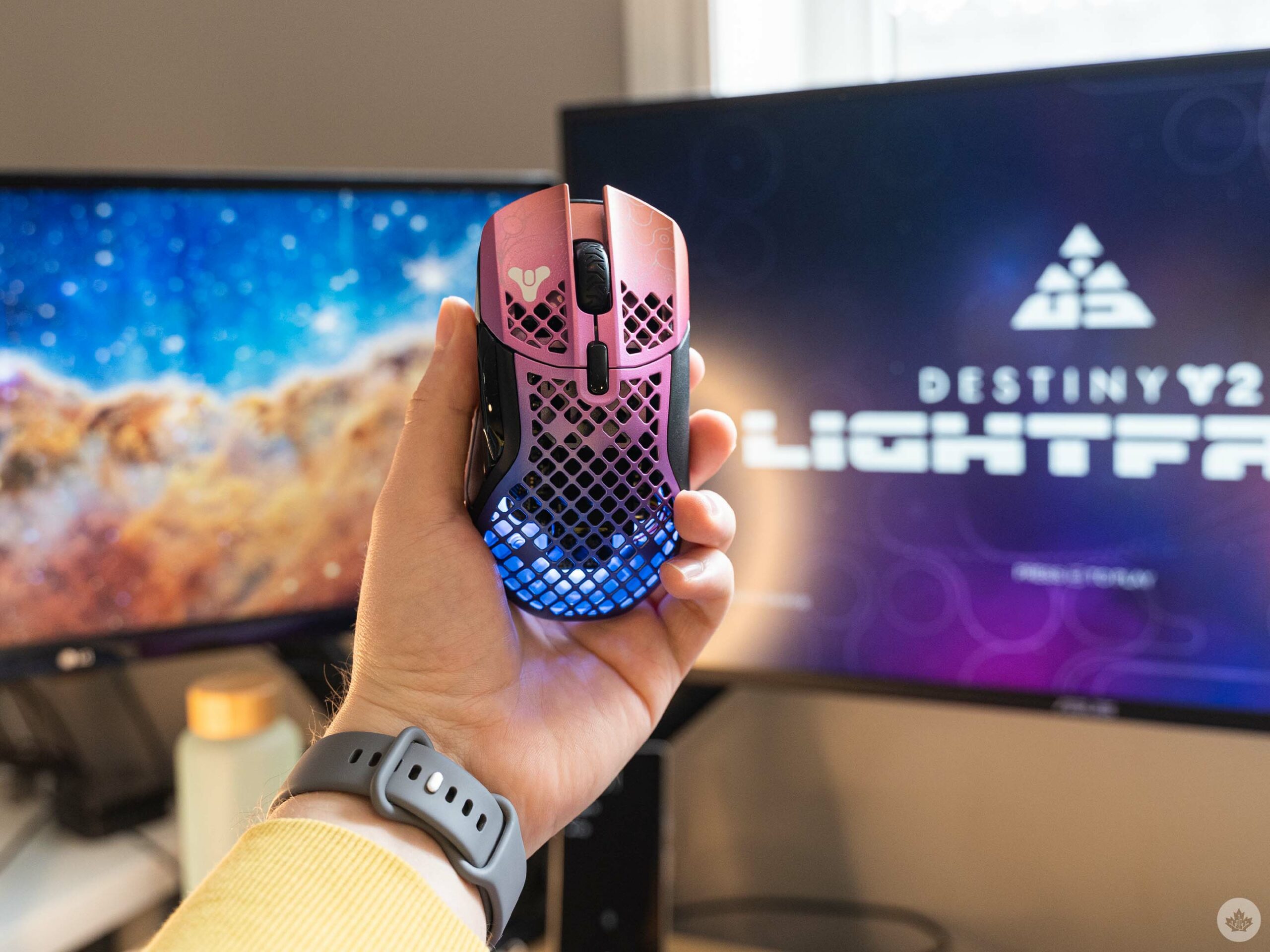
I’ve tested quite a few computer mice over the last year or two, most of which were from Razer. However, Razer may not have dominance over my mousepad going forward — the Aerox 5 offers up all the features I want, is very comfortable to use and offers a lightweight package despite being wireless.
I’ve basically exclusively used the Razer Basilisk V3 Pro and DeathAdder V3 Pro mice since August of 2022, the former with my desktop PC and the latter with my laptop while I’m working. I loved the Basilisk for how it felt in my hand and for the three side buttons, which I like to use for activating my abilities when playing games like Destiny 2. However, the weight of the DeathAdder made it my preference for use when working since my wrist wouldn’t get as tired using it throughout the day (plus, by using two mice, I didn’t have to move the USB dongle around all the time).
The Aerox 5 comes very close to the Basilisk feel for me, offers a very similar layout for the thumb buttons on the side, but also weighs less than the Basilisk (112g), coming in close to the DeathAdder (64g) at 74g. I previously used some wired mice that were lighter, but as I said in my DeathAdder review, I don’t mind some extra weight for the convenience of wireless, as long as it isn’t overkill — the Basilisk really pushed that upper limit for me.
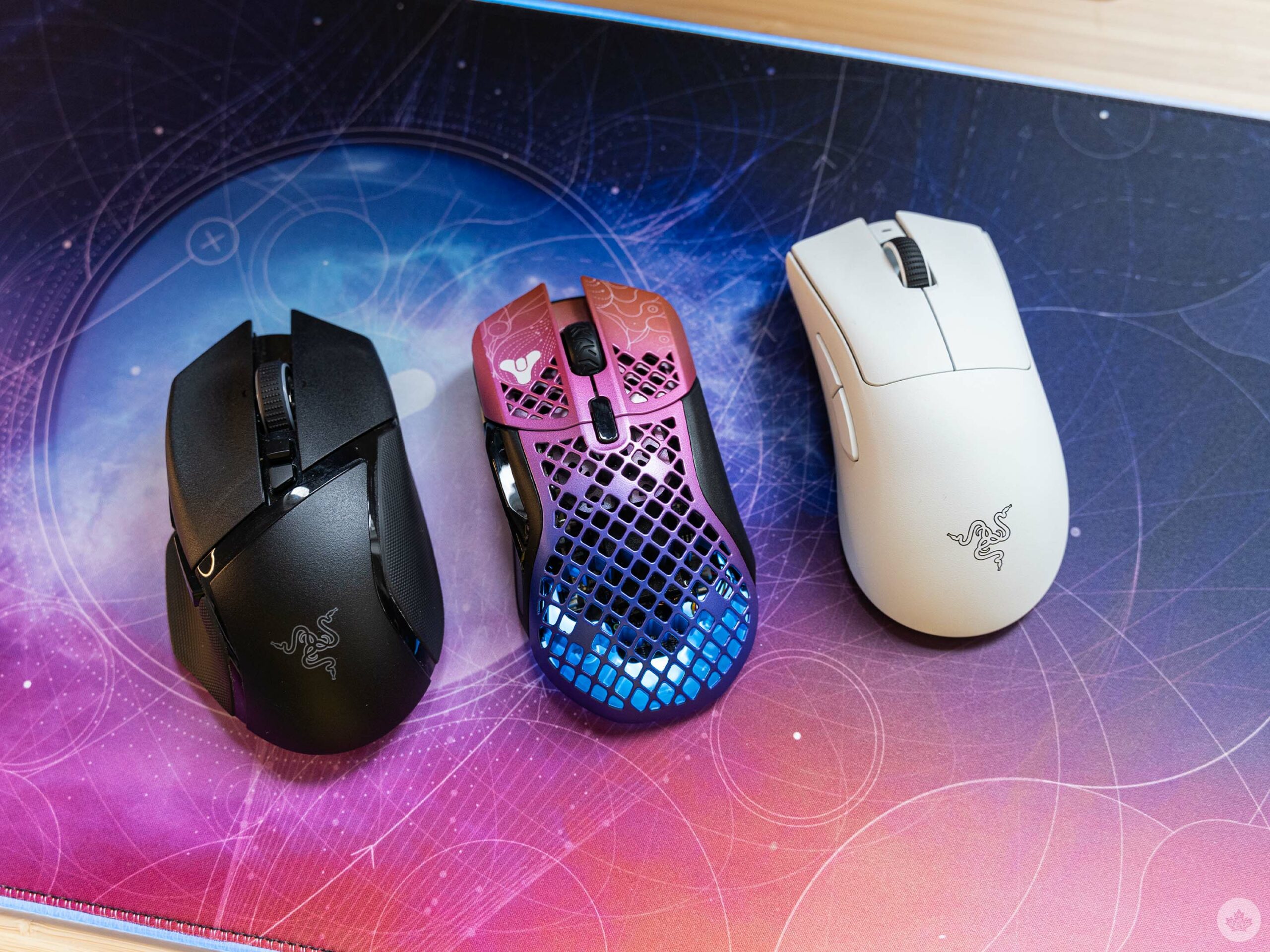
From left to right: Razer Basilisk V3 Pro, Aerox 5, DeathAdder V3 Pro
I also prefer the honeycomb design of the Aerox 5, which not only looks cool but also helps keep my palm from getting too sweaty in the midst of a heated gaming session.
The Aerox 5 boasts ‘AquaBarrier’ technology and an IP54 rating to protect it from water splashes, dirt and dust. It sports a TrueMove Air precision optical sensor with “true 1-to-1 tracking” and Golden Micro IP54 switches. The Aerox 5 offers 100-18,000 CPI and a 1,000Hz polling rate. I also find the scroll wheel is far more tactile on the Aerox 5 than either of the Razer mice I used before.
The Aerox 5 battery life is fine but nothing crazy. A week of heavy gaming, including playing through the Lightfall campaign and running around Neomuna, drained the battery to about 45 percent. You could probably squeeze more longevity out of it by disabling the lights, but as is, you should be fine as long as you keep on top of charging up the battery.
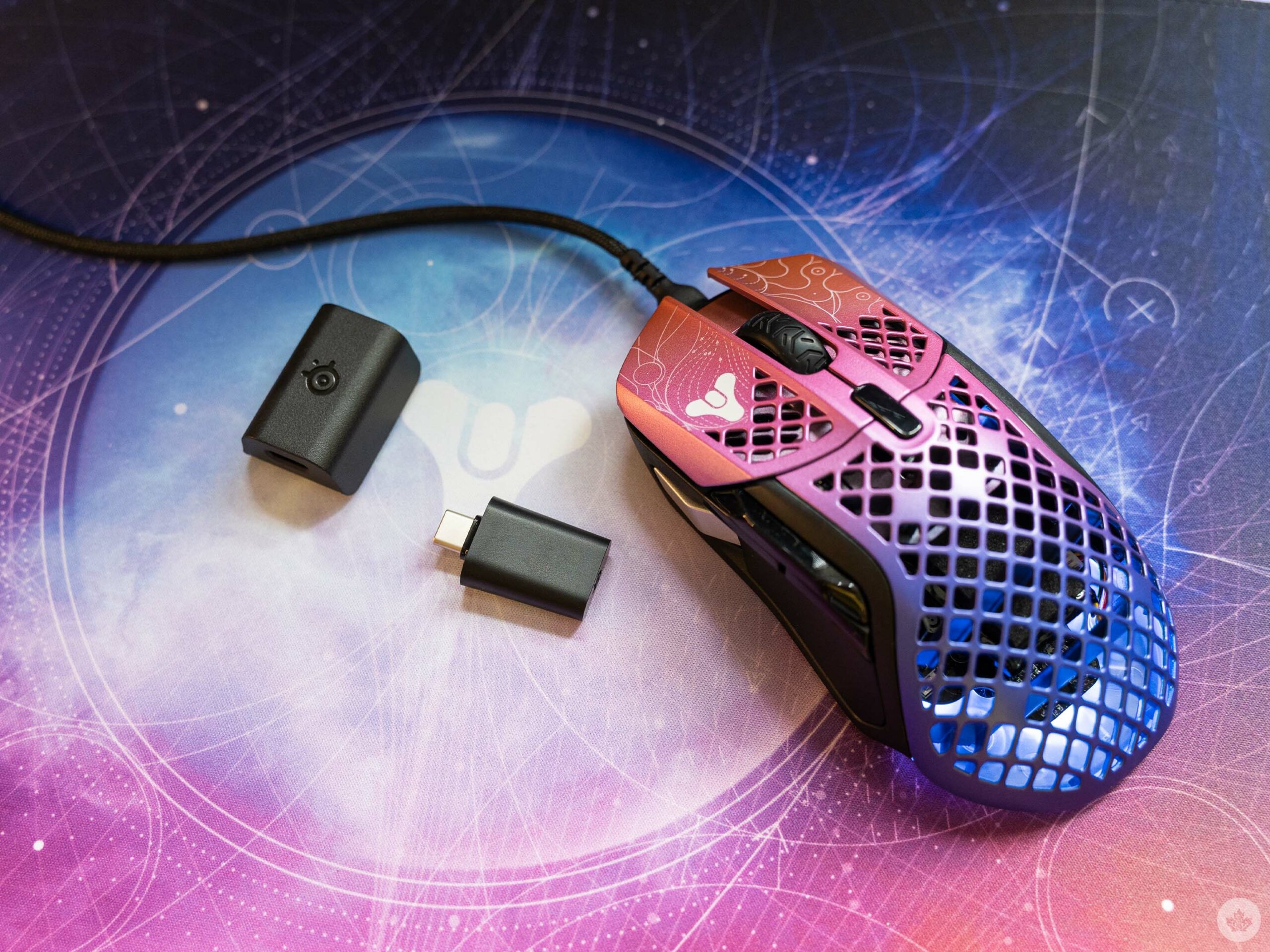
Like other mice I’ve tested, the Aerox 5 comes with a USB-C to USB-A fabric cable and an adapter to connect the USB-C wireless dongle to the cable. This allows you to keep the wireless dongle tucked out of the way on your desk, but you can still easily access the cable to charge your mouse when needed.
The SteelSeries Aerox 5 Destiny 2:Lightfall Edition costs $189.99 in Canada, the same price as the regular version.
The sound of Strand
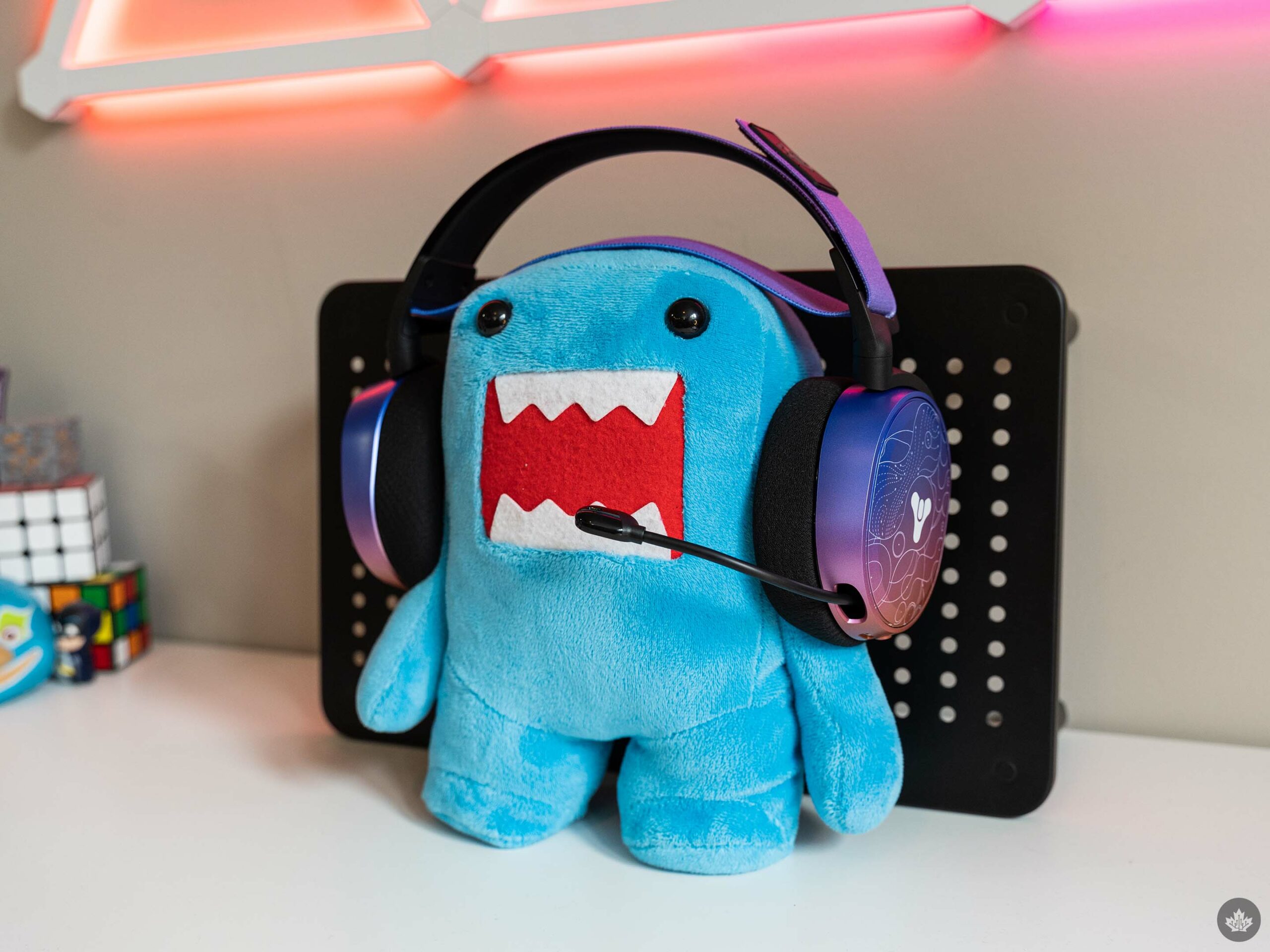
Finally, the SteelSeries Arctis 7+ headset sounds excellent and should prove to be a solid audio option not just for PC players, but for console players too. Unlike the gear above, the Arctis 7+ is designed to work wirelessly with PC, PlayStation 4 and 5, and mobile devices. It’ll work with the Xbox Series X and S too, but only over a wired 3.5mm connection.
Other than the Lightfall-themed colourway, the special edition Arctis 7+ sports a special Destiny 2 audio preset from Bungie. However, coming from the Razer Kaira Pro headset, I really don’t notice a difference in terms of game sound. For that matter, I’d say the audio quality is pretty much on par between the Kaira Pro and Arctis 7+ — both sound excellent for games, music and podcasts.
Generally, I found I preferred the Arctis 7+ to the Kaira Pro headset for a few minor quality-of-life reasons. First, the Arcits 7+ has slightly larger earcups than the Kaira Pro. They feel more comfortable since there’s more space for my ears, but I had no issues wearing either headset for a marathon gaming session.
Another big win for the Arctis 7+ over the Kaira Pro is the retractable microphone. The Kaira Pro mic can be removed when you don’t need it, but I preferred the retractable mic on the Arctis 7+ since I could keep it out of my way but still have easy access to it when needed.
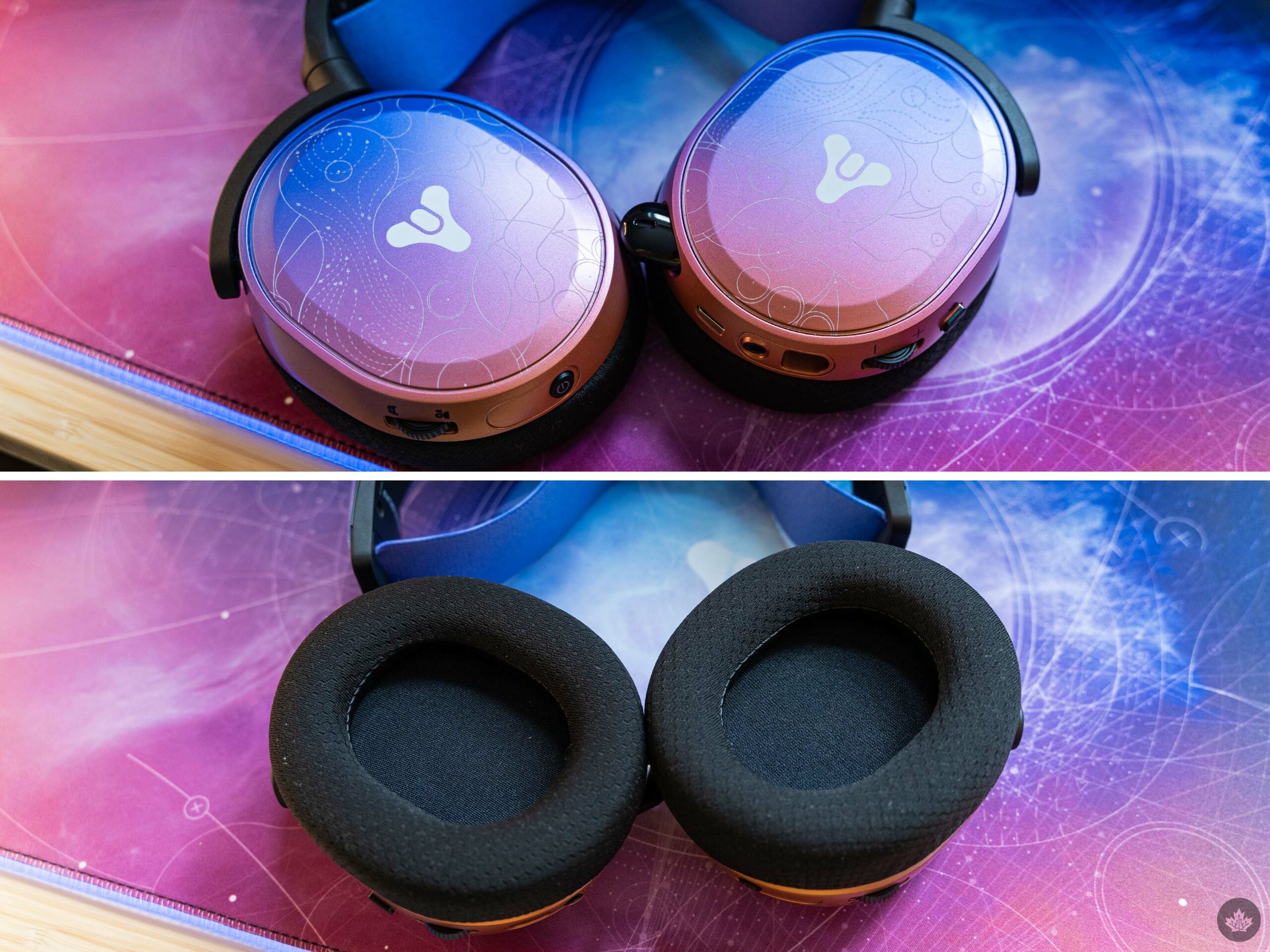
Not everything with the Arctis 7+ was better, however. I’m not a huge fan of the ‘ski goggle’ headband and prefer the Kaira Pro’s adjustable headband that enables a more precise fit. (The Arctis 7+ headband was plenty comfortable, though). I’m also not a big fan of the Arctis 7+’s independent volume control — on the Kaira Pro, turning the volume dial changed the Windows volume, affecting my whole system, while the Arctis 7+ lets me turn up the headphone volume separately from the Windows volume. While I’m sure plenty of people prefer that, it was a major departure from how I’ve managed volume on my PC for years.
On the battery front, the Arctis 7+ boasts 30 hours, and a 15-minute charge gives you three hours of playtime. In my testing, I didn’t have any issues with the battery life. For comparison, the Kaira Pro battery lasts up to 11 hours with HyperSense (which vibrates the earcups based on the audio) and lighting enabled, or up to 50 with both disabled. I typically used the Kaira Pros with HyperSense and lighting enabled and seldom had to charge during a gaming session as long as I remembered to plug in the headset once a week. Moreover, it’s worth noting I didn’t miss HyperSense when I swapped over to the Arctis 7+ — frankly, I hardly noticed it when using the Kaira Pro.
These are all minor nitpicks, however, and I expect the Arctis 7+ will be my primary headset going forward.
The SteelSeries Arctis 7+ Destiny 2: Lightfall Edition costs $229.99 in Canada, while the regular Arctis 7+ costs $219.99.


